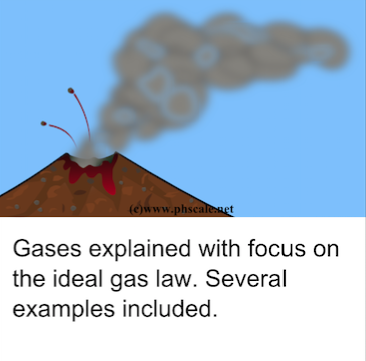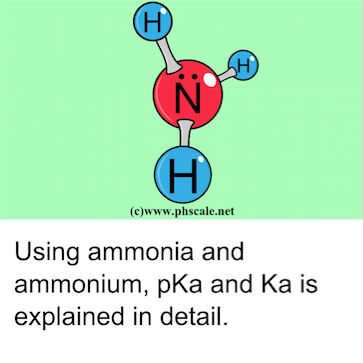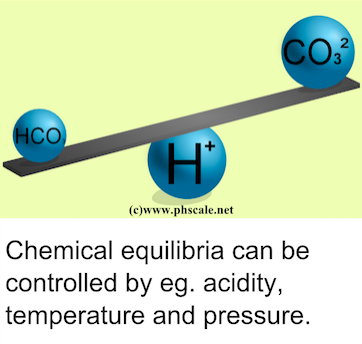Background about buffers
A buffer is a solution that has the ability to keep pH within a certain and narrow range: even if an excessof hydrogen ions (H+) is applied to the solution. In other words:buffers resist changes in pH whenreasonable amount of either H+or OH–is added to the buffer solution.
There are many examples of buffers. Blood in humans is a well buffered system buffered by severalbuffers. Seawater is a buffer, and it is buffered around pH=8.4, mainly because of sodium bicarbonate.
The purpose of this particular webpage is to show how pH can be calculated in solution made bydissolving sodium bicarbonate (NaHCO3) in water.
Example:
Consider a solution made of 0.1 M NaHCO3. The sodium bicarbonate will dissolve into Na+andHCO3–. Furthermore, the HCO3–will partly split intofractions of CO2and CO32-, respectively depending on pH. First ofall we should start by finding out what will happen to NaHCO3when it dissolves in water.
This is easier than it might seem. We simply use the fact that the charge balance is always zero inan aqueous solution. From the pdf document about equilibrium, we know how to calculate the[CO2], [HCO3–] and [CO32-].In fact, it is not necessary to calculate the [CO2] but to help understand what is goingon, it’ included in the following calculations that can also be seen in anexcel spreadsheet.
From the chapter aboutequilibriumswe already know that:
| Compound / ion | Calculation |
| [CO2]* | TIC / (1 + Ka(CO2*) / [H+] + Ka(HCO3–).Ka(CO2*) / [H+]2) |
| [HCO3–] | TIC / (1 + [H+] / Ka(CO2*) + Ka(HCO3–) / [H+]) |
| [CO32-] | TIC / (1 + [H+]2/ (Ka(HCO3–).Ka(CO2*)) + [H+] / Ka(HCO3–)) |
In this case we are adding 0.1 M NaHCO3we are adding 0.1 M Na+and 0.1 M HCO3that is distributedamong CO2*, HCO3–and CO32-depending on pH.This pH or [H+] is easily calculated (not considering ionic strength).
Step 1: A charge balance is established
It must be that [Na+] – [HCO3–] – 2.[CO32-] = 0.
If not, the charge balance is not zero andsomething is wrong. This equation can be fine-tuned to include [H+] and [OH–] so that theequations is:
[Na+] – [HCO3–] – 2.[CO32-] + [H+] – [OH–] = 0
We do not know either the [HCO3–] or the [CO32-] as the [H+] is unknown.
However, by trying out with the different [H+]s in the equation:
[Na+] – TIC / (1 + [H+] / Ka(CO2*) + Ka(HCO3–) / [H+]) – 2.TIC / (1 + [H+]2/ (Ka(HCO3–).Ka(CO2*)) + [H+] / Ka(HCO3–)) + [H+] – 10-14/[H+]= 0
it is seen that when [H+] is 10-8.31the equation is fulfilled. This leads us to theconclusion that a 0.1 M NaHCO3has a pH of 8.31. All calculations are shown in the excel spreadsheet. It is now up to the readerto figure out why the pH of 0.5 M NaHCO3solution is also 8.31 and why only very, very dilutesolutions of NaHCO3have a pH closer to 7.
This page is also available as a pdf-document that can be accessed by clicking here.
Web resources
Dissolving salts
A model (for download) illustrating the dissolving of salts







